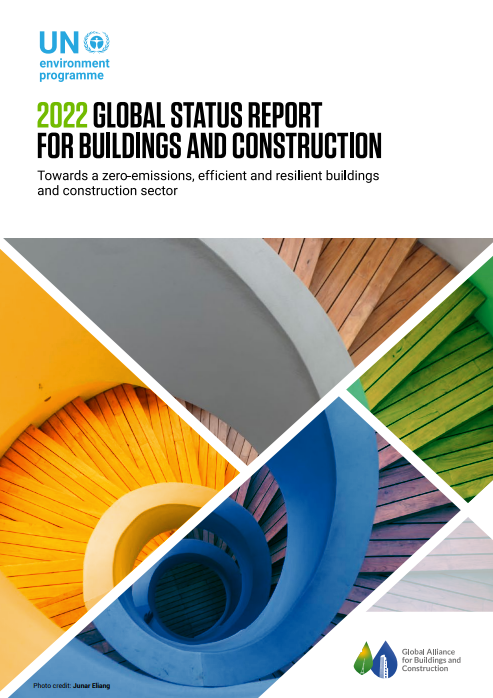The report comprehensively explores governance gaps in the rapidly growing Internet of Things (IoT) landscape. Drawing from the insights of over 270 experts worldwide, it strongly emphasizes the pressing need for universal governance of IoT devices to boost security, privacy, sustainability, interoperability, and equity. Moreover, the report underscores key areas where businesses can take collective action, particularly in areas such as ethics, security, and accessibility. In the spirit of encouraging progress, it prompts businesses and governments to adopt universal best practices. These include establishing baseline IoT security capabilities, implementing model policies and guidelines, and creating robust frameworks to meet sustainable development goals.
Key findings and trends
It emphasizes the importance of sustainable practices, energy efficiency, and carbon reduction. The findings can guide stakeholders in decision-making, prioritizing investments in sustainable solutions, and transitioning towards a more resilient, low-carbon built environment.
- Energy Intensity: indicates a slight decrease in energy intensity in buildings from 2015 to 2021, showing a trend towards more energy-efficient buildings.
- Investment: the sector has significantly increased, reflecting a growing focus on sustainable and resilient building practices.
- Gross Floor Area: the global gross floor area has increased, indicating continued growth in the construction sector.
- Nationally Determined Contributions (NDCs): the number of NDCs mentioning buildings has significantly increased, showing more significant recognition of the importance of the building sector in climate action.
- Emission Intensity: spotlights a decrease in building emission intensity, suggesting progress towards reducing carbon emissions in the sector.
- Building Energy Codes: the number of countries making energy codes has increased, indicating a global effort to improve energy efficiency in buildings.
- Embodied Carbon Labelling: there is a growing interest in establishing international standards for embodied carbon labelling of building materials to address discrepancies and promote low-carbon materials.
Overview
Disruptive Trends Impacting Building and Construction Decarbonization in 2021 and 2022
Spotlights the intricate factors influencing the decarbonization of the building and construction industry. It stresses the need for proactive steps and strategic actions to tackle the emerging challenges in this sector.
- Starting with the Impact of the COVID-19 Pandemic: The COVID-19 pandemic led to a significant disruption in the buildings and construction sector in 2020, resulting in a drop in construction demand, workplace shutdowns, labour and material shortages, and energy affordability challenges. While construction activities rebounded in 2021, the sector faced new energy demand and emissions challenges.
- Moving on to Energy Intensity and Emissions, The report notes that building operational emissions reached an all-time high in 2021, surpassing the peak levels observed in 2019. This increase in emissions was driven by factors such as the use of fossil fuel gases in buildings and the energy-intensive operation of buildings as workplaces reopened post-pandemic.
- Global CO2 Emissions: CO2 emissions from building operations in 2021 reached around 10 GtCO2, representing a 5% increase from 2020 and a 2% increase from the previous peak in 2019. Considering estimated emissions from producing building materials, buildings accounted for approximately 37% of global CO2 emissions in 2021.
- Considering the Challenges and Opportunities: The convergence of economic, energy, security, and climate crises poses challenges to decarbonizing the buildings sector. However, it also presents an opportunity for political and organizational leadership to prioritize actions that support decarbonization and sustainability in the built environment.
- Finally, on the topic of Resilience and Adaptation, Stresses the need for resilience and adaptation strategies in the face of disruptive trends, urging stakeholders to address the impacts of these challenges on building decarbonization efforts.
Global Buildings Climate Tracker
An essential tool for tracking decarbonization progress in the building sector. It emphasizes the need for more actions to align with the Paris Agreement’s goals and achieve a sustainable, low-carbon built environment.
- Starting with the Purpose of the Tracker, the Global Buildings Climate Tracker (GBCT) is designed to monitor worldwide progress in decarbonizing buildings, focusing on key indicators related to CO2 emissions, energy intensity, and renewable energy share.
- Moving onto the Composite Index, the GBCT comprises seven parts: indicators for CO2 emissions, energy intensity, renewable energy share, building regulations, energy efficiency investments, green building certifications, and building measures in Nationally Determined Contributions (NDCs).
- Regarding decarbonization progress, the report indicates that the building sector remains off track to achieve decarbonization by 2050, with the decarbonization index scoring only 8.1 out of 100 in 2021, well below the target of 17.1 points. This suggests that the sector is achieving only about half of the necessary decarbonization.
- Regarding the Post-Pandemic Rebound, despite marginal improvements in decarbonization efforts since 2019, observed emissions and energy consumption continued to increase in 2021, surpassing pre-pandemic levels. The rebound in building sector emissions confirms that the boost in decarbonization during the pandemic was temporary, with no structural improvements achieved.
- Finally, when discussing challenges and recommendations, the widening gap between actual decarbonization performance and desired pathways underscores the need for enhanced efforts to accelerate decarbonization in the building sector. To advance decarbonization goals, stakeholders are urged to address external factors such as fluctuating consumer prices, inflation, and temperature changes.
Global Buildings and Construction Status
Provides a comprehensive evaluation of the industry’s performance. Notably, it stresses the necessity for collective efforts to expedite decarbonization, enhance energy efficiency, and promote sustainable building and construction practices.
- Decarbonization Progress: Highlights that the buildings and construction sector remain off track to achieve decarbonization by 2050, as the Global Buildings Climate Tracker indicates. The sector’s decarbonization index decreased to 8.1 points in 2021, reflecting a slowdown in decarbonization efforts post-pandemic.
- Emission Trends: Secondly, building operational emissions reached a record high in 2021, surpassing previous peak levels. The sector accounted for approximately 37% of global CO2 emissions in 2021, emphasizing the need for urgent action to reduce emissions from building operations.
- Energy Intensity: Despite a slight decrease in energy intensity in buildings from 2015 to 2021, there is a continued focus on improving energy efficiency and reducing energy consumption in the sector.
- Investment and Growth: Next, the report notes a significant increase in investments in the buildings and construction sector, reflecting a growing emphasis on sustainable and resilient building practices. The global gross floor area has also expanded, indicating continued growth in construction activities.
- Policy and Regulations: Also, the number of countries building energy codes has increased, demonstrating a global commitment to enhancing energy efficiency in buildings. The inclusion of building measures in Nationally Determined Contributions (NDCs) has also risen, highlighting the sector’s importance in climate action.
- Challenges and Opportunities: Lastly, the report underscores the challenges posed by the COVID-19 pandemic, economic uncertainties, and climate crises while emphasizing the opportunities for leadership and innovation to drive decarbonization and sustainability in the built environment.
Sustainable Buildings and Construction Policies
Underlines the need for robust policy frameworks, national commitments, and extensive stakeholder engagement to facilitate a smooth transition towards a more sustainable and resilient built environment. By proactively addressing these challenges and thoughtfully implementing the suggested actions, we can significantly accelerate progress towards decarbonization and sustainability in the buildings and construction sector.
- Policy Progress: Firstly, the COVID-19 pandemic has significantly slowed progress on buildings and construction policies. This inaction has impeded efforts to reduce emissions and promote sustainability in the sector.
- National Commitments: Secondly, many countries have actively included buildings in their Nationally Determined Contributions (NDCs), with 80% of countries referencing buildings in their action plans. However, while 40% of countries have implemented building energy codes, only 26% have made these codes mandatory for all buildings, indicating the need for improvement in regulatory frameworks.
- Importance of Policies: Thirdly, policies on sustainable buildings and construction drive decarbonization and energy efficiency in the sector. The sector requires effective policy instruments to achieve necessary emission reductions and ensure the resilience and sustainability of buildings and infrastructure.
- Role of Stakeholders: Furthermore, policymakers at all levels, industry decision-makers, and the finance sector must embrace the sector’s transformation and invest in innovative solutions that speed up decarbonization. Also, it emphasises the essential role of civil society participation in supporting changes in the built environment.
- Challenges and Recommendations: Lastly, the report calls for more decisive political and organizational leadership to prioritize actions that support decarbonization and sustainability in the buildings sector. Achieving the goals of the Paris Agreement requires investment and financing for sustainable buildings.
Investment and Financing for Sustainable Buildings
Accentuates the vital role of financial resources in propelling the transition towards sustainable and energy-efficient buildings. Furthermore, it highlights that amplified investments in energy efficiency, clean energy technologies, and sustainable building practices are paramount for reaching decarbonization goals. Ultimately, these investments are essential to create a more resilient, globally sustainable built environment.
- Investment Growth: Firstly, investment in energy efficiency within the global buildings sector experienced significant growth, surpassing USD 237 billion in 2021. This marked a 16% increase from 2020, reflecting substantial government investments in efficiency and constructing new, energy-efficient buildings.
- Efficiency Investments: Secondly, the rise in investment in more efficient new buildings and those covered under sustainability or green certifications is notable, with an estimated 19% growth in certified buildings compared to 2020. This underscores the increasing focus on improving energy performance and reducing CO2 emissions in the built environment.
- Fuel Switching and Clean Energy: Thirdly, investing in fuel switching to clean fuels, such as through electrification and adopting heat pumps for heating and cooling, is identified as a critical strategy for reducing energy demand and emissions. The global heat pump market saw growth of around 15% in 2021, indicating a shift towards cleaner energy sources.
- Challenges and Opportunities: Fourthly, while the increase in investment in sustainable buildings is positive, it also underlines the challenge of maintaining investment momentum during periods of inflation. Investing in efficiency can mitigate future energy price volatility and reduce emissions, emphasizing the importance of continued financial support for sustainable building practices.
- Regional Focus: Lastly, the report emphasizes the need for increased investments in energy efficiency and sustainable building practices in regions like Africa, where a significant portion of the population lives in informal housing. Opportunities exist to build high-quality, sustainable, and climate-resilient structures to meet the growing urban population’s needs.
Regional focus: Africa
Underscores the need for sustainable and resilient building practices to address the continent’s housing challenges and climate vulnerabilities. By embracing traditional construction methods, investing in sustainable materials, and implementing supportive policies, Africa can pave the way for a more sustainable and climate-resilient built environment that meets the needs of its growing population.
- Housing Needs: an estimated 70% of the African building stock 2040 is yet to be built. This creates a pressing need to address the growing demand for housing, particularly in urban areas where 80% of population growth is expected to occur by 2050. Currently, over half of African citizens reside in informal housing, indicating low resilience of buildings against climate change impacts.
- Sustainable Construction Practices: spotlights traditional sustainable construction practices as a cornerstone of African cultural heritage. Promoting, preserving, and further developing these techniques is crucial to enable more affordable housing that is adaptable to local climate conditions. Embracing sustainable construction materials and strategies can create zero-carbon or zero-carbon-ready buildings.
- Opportunities for Innovation: African buildings and urban environments hold enormous opportunities for construction to high-quality and sustainable standards. By leveraging sustainable construction materials and techniques, African countries can reduce emissions, enhance resilience to climate change, and meet the housing needs of a rapidly growing population.
- Policy Recommendations: emphasizes the importance of investing in sustainable building practices in Africa. It encourages governments to provide financial and non-financial incentives to support low and zero-carbon building activities, particularly for vulnerable populations facing energy price shocks.
- Cultural Heritage Preservation: Lastly, the report recognizes the significance of traditional construction practices in Africa’s cultural heritage. It sees promoting and preserving these techniques as essential for fostering sustainable and affordable housing solutions that align with local climate conditions.
Topic Focus: Building Materials
Stresses the importance of material efficiency, longevity, and sustainable practices in reducing carbon emissions and promoting environmental sustainability in the construction sector. By prioritizing recycled materials, enhancing environmental impact assessments, and incentivizing sustainable building practices, the industry can make significant strides towards a more sustainable and resilient built environment.
- Material Efficiency Strategies: highlights the significant impact of building materials on energy-related CO2 emissions, accounting for approximately 9% of overall emissions. Material efficiency strategies, including the use of recycled materials, have the potential to reduce greenhouse gas emissions in the construction material cycle substantially.
- Challenges in Environmental Impact Assessment: Despite progress in measuring and improving data quality on the environmental impacts of construction materials, challenges remain in comparing the environmental footprints of different materials and systems. Efforts are needed to enhance the measurement and transparency of environmental impacts to drive sustainable material choices.
- Longevity and Sustainability: the longevity of building infrastructure is emphasized as a key factor in reducing carbon emissions. Incentivizing measures that extend building lifespans without compromising operational energy efficiency is crucial. Building carbon rating systems should reward low-carbon solutions, efficient production methods, and avoiding new construction where possible.
- Resource Consumption: the global consumption of raw materials, including construction materials and metals, is projected to nearly double by 2060. This growth, driven by economic expansion and rising living standards, poses challenges regarding environmental overloading and greenhouse gas emissions associated with resource extraction and processing.
- Waste Management: Lastly, construction, renovation, and demolition activities contribute significantly to global waste generation, with approximately 100 billion tonnes of waste produced annually. Addressing waste management in the construction sector, particularly in fast-growing economies, is essential to reduce environmental impacts and promote circular economy principles.
Roadmaps for Buildings and Construction
The importance of strategic planning and teamwork in promoting sustainable, decarbonized built environments is underscored. By developing and applying building decarbonization roadmaps at national and regional levels, countries can accelerate the shift towards energy-efficient, low-carbon buildings, aligning with global climate mitigation objectives.
- GlobalABC Roadmaps: The Global Alliance for Buildings and Construction (GlobalABC) is leading the development of building decarbonization roadmaps in collaboration with various stakeholders. These roadmaps are strategic guides for developing sustainable building construction practices for countries and regions.
- Regional Roadmaps: Several countries and regions have published or are developing their building decarbonization roadmaps. These roadmaps align with the GlobalABC framework and aim to address specific regional challenges and opportunities in promoting energy efficiency, reducing emissions, and enhancing sustainability in the built environment.
- Focus on Decarbonization: The roadmaps emphasize decarbonizing the buildings and construction sector to meet climate goals and reduce greenhouse gas emissions. They outline strategies for improving energy efficiency, adopting clean energy technologies, and promoting sustainable building practices to achieve carbon neutrality.
- Customized Approaches: Building decarbonization roadmaps are tailored to each country or region’s unique circumstances and priorities. Considering local contexts, challenges, and opportunities, these roadmaps provide actionable steps and policy recommendations to drive the transition towards low-carbon, resilient, and efficient buildings.
- Launch at COP27: The report mentions that some of the building decarbonization roadmaps developed for countries and territories will be launched at the 27th Conference of the Parties (COP27). This highlights the significance of integrating sustainable building practices into global climate action agendas and fostering international cooperation in the buildings and construction sector.
Key Recommendations for Policy and Decision Makers
This emphasizes the vital role of proactive policy interventions. It also underscores the need for investment in innovation and stakeholder engagement for the long-term planning necessary to transition towards sustainable, low-carbon, and resilient building and construction practices. Implementing these recommendations can help policymakers and industry leaders catalyze positive change and accelerate the shift towards a more sustainable built environment.
- Firstly, Policymakers Must Align with the Paris Agreement: We urge policymakers to align the building sector’s growth with the Paris Agreement’s objectives. They should implement effective policy instruments and tools to reduce emissions and promote sustainability and resilience in the buildings and construction sector.
- Next, Industry and Finance Sectors Should Invest in Innovation: We encourage decision-makers in the industry and finance sectors to embrace transformation and invest in innovative products and services that accelerate decarbonization. Stakeholders can drive progress towards low-carbon and energy-efficient buildings by supporting research and development in sustainable building technologies.
- Civil Society Should Engage Actively: The active participation of civil society is crucial in supporting necessary changes in the building and construction sector. By engaging stakeholders, launching public awareness campaigns, and involving the community, we can foster a culture of sustainability, drive demand for green buildings, and promote sustainable practices at the grassroots level.
- Policymakers Should Implement Policy Instruments: This includes setting energy performance standards, providing financial incentives for green building projects, and promoting the adopting of renewable energy technologies in the construction sector.
- Decision Makers Should Prioritize Long-Term Planning: By setting clear targets, developing robust strategies, and fostering stakeholder collaboration, policymakers can create a roadmap for achieving a sustainable and low-carbon buildings sector.




